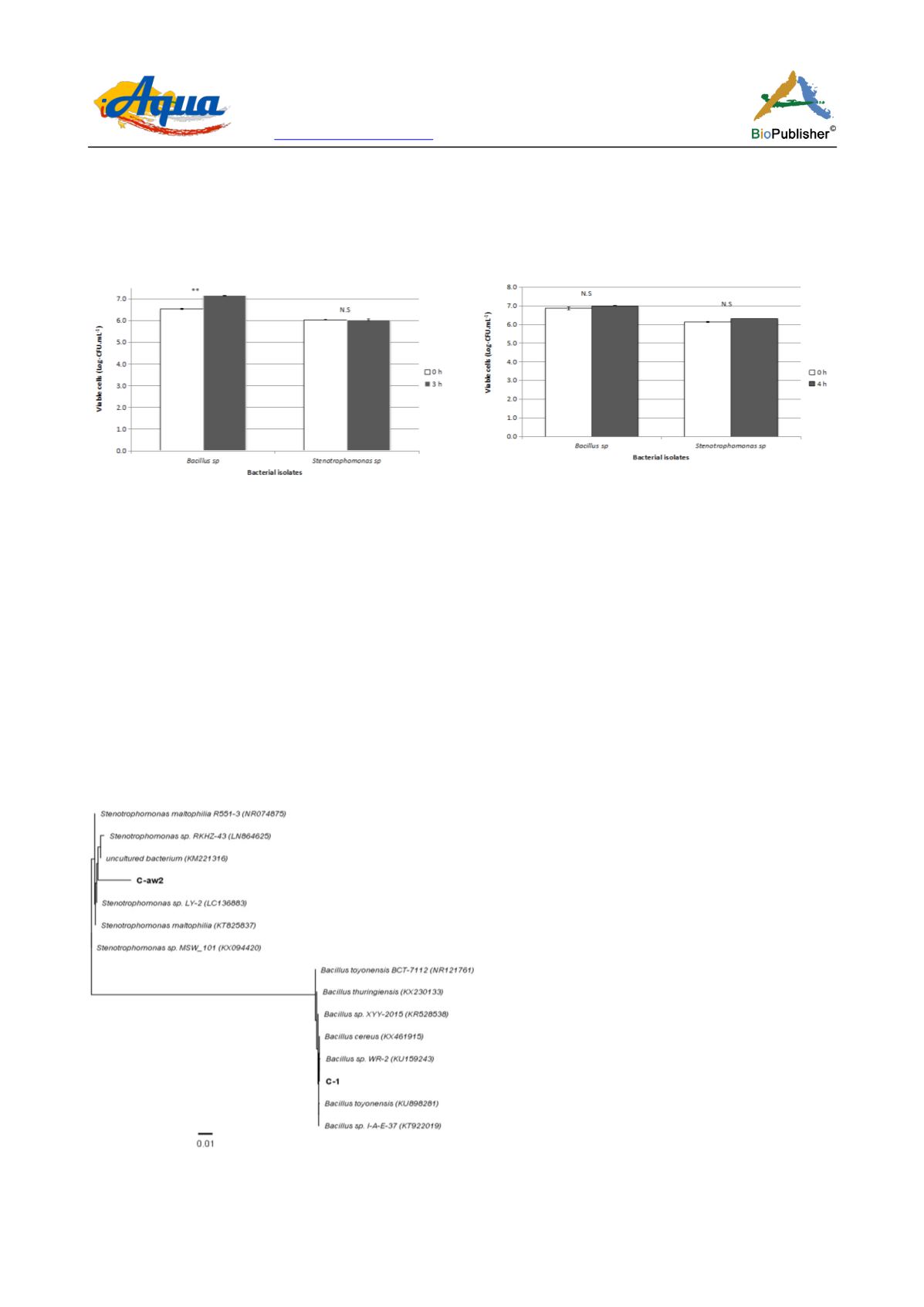
International Journal of Aquaculture, 2016, Vol.6, No.10, 1
-
9
4
1.5 Survival in simulated intestinal condition
There were no significant differences in the viable cells of both cellulose-degrading bacteria (Log. CFU.mL
-1
) at 0
h and 4 h, (t=3.46, df 1, p=0.18 for
Bacillus
sp; and t=5.60, df 1, p=0.11 for
Stenotrophomonas
sp). In general,
viable cells of
Stenotrophomonas
sp and
Bacillus
sp were slightly higher, but statistically no significant difference
after the 4 h incubation in the intestinal simulation (Figure 5).
Figure 4 The changes of viable cells of
Stenotrophomonas
sp
and
Bacillus
sp after 3 h incubation in a stomach simulation
Note: The bars are the average numbers of viable cells with
standard deviations. N.S is no significant difference in viable
cells between 0 h and after 3 h, p > 0.05.
*
* is significant
difference, p < 0.01
Figure 5 The change of viable cells of two cellulose - degrading
bacteria after 4 h incubation at an intestinal simulation
Note: The bars are average values with standard deviations.
N.S is no significant difference, p > 0.05
1.6 Toxicity
Both
Stenotrophomonas
sp
and
Bacillus
sp were found to be harmless towards juvenile hybrid abalone, indicated
by no mortality or sign of diseases were observed during the 14-day feeding trial.
1.7 Phylogenetic tree
A phylogenetic tree was constructed based on partial sequence of 16S rRNA gene and GeneBank data-base
reference sequence using Genious software version 5.3.6 (Figure 6). The result revealed that isolate C - aw2 was
very close to
Stenotrophomonas
sp LY -2 and isolate C -1 indicated to have a closed relatedness with
Bacillus
sp.
strain WR -2.
Figure 6 Phylogenetic tree showing the relative position of 2 cellulose - degrading bacteria isolated from gastrointestinal tract of
hybrid abalone as inferred by the neighboring - joining method of partial 16S rDNA sequence


